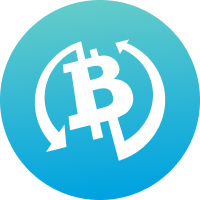Gravity, a Layer 1 blockchain, is engineered for mass adoption and an omnichain future, leveraging a sophisticated blend of technologies to achieve its goals. At the heart of Gravity's architecture is the Orbit stack, which incorporates Arbitrum Nitro technology. This combination enhances the blockchain's scalability and efficiency, allowing it to handle a high volume of transactions with minimal latency. The use of Arbitrum Nitro technology is particularly significant as it optimizes transaction throughput and reduces costs, making it an attractive option for developers and users alike.
A distinctive feature of Gravity is its integration of Zero-Knowledge Proofs (ZKPs). These cryptographic protocols enable the verification of transactions without revealing any sensitive information, thereby enhancing privacy and security. ZKPs are crucial in maintaining confidentiality while ensuring that all transactions are valid and trustworthy. This technology is especially important in a decentralized environment where privacy concerns are paramount.
Gravity's security is further bolstered by its state-of-the-art consensus mechanisms. These mechanisms ensure that the network remains secure against attacks from bad actors. By requiring multiple validators to agree on the validity of transactions, Gravity minimizes the risk of fraudulent activities. This consensus model is designed to be both robust and efficient, ensuring that the network can scale without compromising security.
The staking-powered architecture of Gravity plays a vital role in securing the network. By staking G, the native token, participants can help validate transactions and maintain the integrity of the blockchain. This process not only secures the network but also incentivizes users to act honestly, as they have a financial stake in the network's success. Staking also facilitates governance decisions, allowing token holders to have a say in the future development of the platform.
G serves as the utility token within both the Gravity and Galxe ecosystems. It powers transactions as the gas token, enabling seamless interactions across the network. In addition to its role in transaction processing, G is integral to governance, incentivizing growth, and facilitating payments. This multifaceted utility ensures that G remains a central component of the ecosystem's functionality.
Galxe, a decentralized super app, complements Gravity by providing a suite of modular AI, digital identity, and blockchain solutions. With products like Quest, Passport, Score, Compass, and Alva, Galxe supports the development of user-friendly applications that emphasize web3 exploration and self-sovereign digital identity management. This synergy between Gravity and Galxe fosters an environment where advanced blockchain solutions can thrive, catering to a wide range of use cases.
The restaking-powered architecture of Gravity is another innovative aspect that enhances its performance and security. By allowing staked tokens to be used in multiple roles, this architecture maximizes resource efficiency and provides additional layers of security. This approach not only optimizes the use of staked assets but also contributes to the overall resilience of the network.
Gravity's design abstracts the technical complexities of multichain interactions, making it accessible to a broader audience. By simplifying these interactions, Gravity enables developers to build applications that can seamlessly operate across multiple blockchains. This capability is essential for fostering an interconnected blockchain ecosystem where different networks can communicate and collaborate effectively.
Incorporating advanced technologies and a comprehensive approach to blockchain design, Gravity positions itself as a forward-thinking platform ready to meet the demands of an evolving digital landscape.
 Most Visited
Most Visited Community Sentiment
Community Sentiment Chain Ranking
Chain Ranking Overall NFT Stats
Overall NFT Stats Upcoming Sales
Upcoming Sales Market Cycle Indicators
Market Cycle Indicators Bitcoin Dominance
Bitcoin Dominance RSI
RSI MACD
MACD Funding Rates
Funding Rates Signals
Signals Trending
Trending New
New Gainers
Gainers Meme Explorer
Meme Explorer Top Traders
Top Traders Feeds
Feeds Topics
Topics Lives
Lives Articles
Articles Research
Research



































